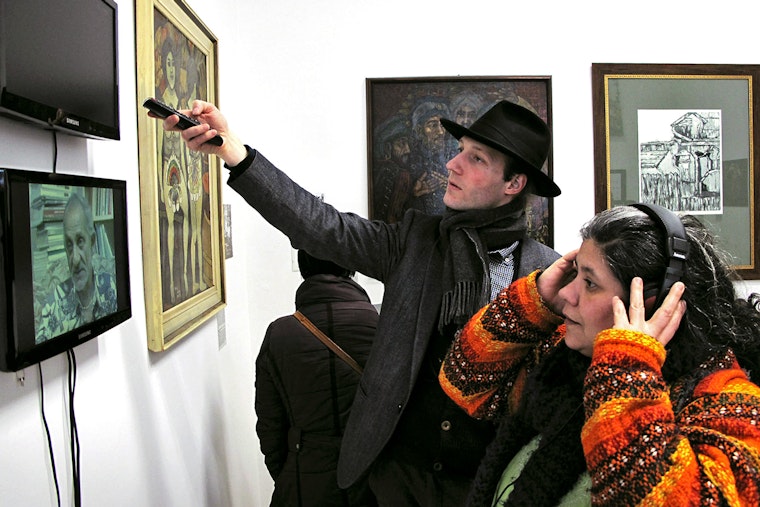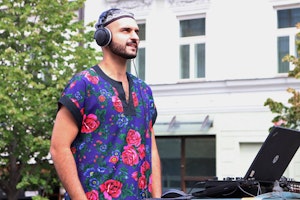Europe’s Roma Struggle to Reclaim Their Arts Scene
By Delaine Le Bas & Tímea Junghaus

August 2 will commemorate the mass killing of hundreds of thousands of Roma and Sinti men, women, and children by the Nazis and their collaborators across German-occupied Europe. Commemorations are important tools to keep atrocities from being lost to history. But to prevent them from ever happening again, it’s equally essential to reflect on what made the atrocities possible in the first place.
In the case of the Roma genocide, part of what made it possible was the Nazi regime’s use of visual humiliation—mocking caricatures that ridiculed and demonized Roma to erode public empathy for them. The visual humiliation politics culminated with an exhibition called Degenerate Art, organized in 1937 by the Nazi Party in Munich, which showed countless caricatures of supposedly inferior races—among them Roma and Sinti—along with representations of Romani individuals by the German expressionist painters Otto Mueller and Otto Pankok, themselves declared “degenerate artists.”
Visual humiliation was central to the Nazi propaganda machine, and laid the groundwork for the destruction of the “Other.” After these campaigns and the genocide they helped to enable, reconstructing dignity and restoring a positive—or at least human—perception of Roma and Sinti was a strenuous task.
For Romani arts in particular, re-establishing respect in cultural circles was difficult. Not until the first World Romani Congress in 1971 were Roma writers, artists, and film directors reintroduced into mainstream discourse. Until that time, Roma productions were still described by the “experts” as naive, barbarian, primitive, and primordial.
Slowly, however, that began to change. In 1979, the First National Exhibition of Self-Taught Roma Artists was shown in Hungary, organized by the activist Ágnes Daróczi. Sandra Jayat, the French poet, writer, and painter, organized Première Mondiale d’art Tzigane (First World Exhibition of Roma Art) at the Conciergerie in Paris in 1985. The struggle for regard culminated with the establishment of the First Roma Pavilion at the 52nd Venice Contemporary Art Biennale in 2007.
Since then, however, these gains have deteriorated. Individual artists have continued to maintain an international presence, but a collective recognition of Romani cultural production in the mainstream has failed to gain traction. Romani creative production is in worse shape today than it was in the 1970s.
Today, over 10,000 works by Roma artists are present in state collections and storage in Europe, but only two of these pieces are exhibited in the permanent collections of majority spaces. Roma are deprived of their right to access their cultural heritage, and of their right to the production, presentation, and interpretation of their own Romani culture.
In several majority spaces, “minority art” is seen as ignoring the aesthetic norms canonized by the majority of society. Aesthetic discrimination—its motivations not so different from racial or gender discrimination—continues to rule the art scene.
In parallel, the visual humiliation of Roma continues. In many European countries, an increasing number of paramilitary organizations, racist and neo-Nazi groups, and nationalist formations are using visual propaganda in their campaigns to amplify anti-Roma hatred and violence. Those representations are fueling attacks on Roma bodies: across our continent, Roma people are subject to physical attacks, forced evictions, mass deportation, economic exploitation, cultural depreciation, and political exclusion.
We need to deconstruct and counter the visual language of hate and humiliation, which makes attacks on Roma acceptable, by promoting Romani contemporary art and cultural production. Anti-Roma visual propaganda is here, bearing an unnerving resemblance to the propaganda that led to the Roma genocide 80 years ago.
This is why we ask majority cultural spaces to give a place to Roma contemporary art, and why we support the planned European Roma Institute, which will transform the negative discourse about Roma into a discourse of cultural recognition and respect. The current cultural underrepresentation of work made by Roma coupled with the continuing stereotypical representation of Roma by non-Roma allows our repression to continue.
Nothing about us without us.
The Open Society Foundations and the Council of Europe support the Alliance for the European Roma Institute.
Delaine Le Bas is a contemporary artist.
Tímea Junghaus is an art historian and contemporary art curator, and a member of the Alliance for the European Roma Institute for Arts and Culture.


